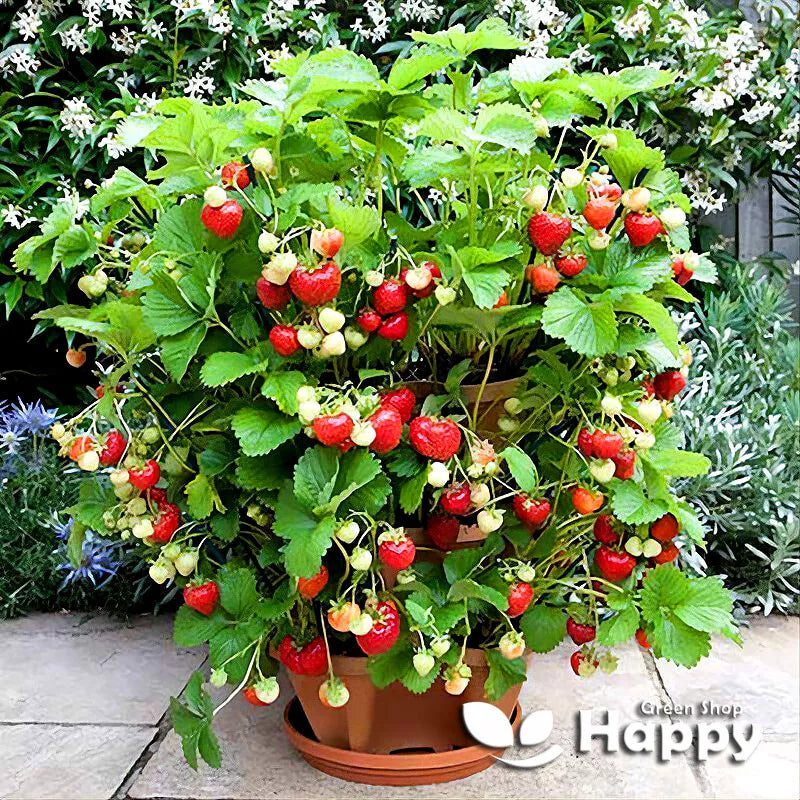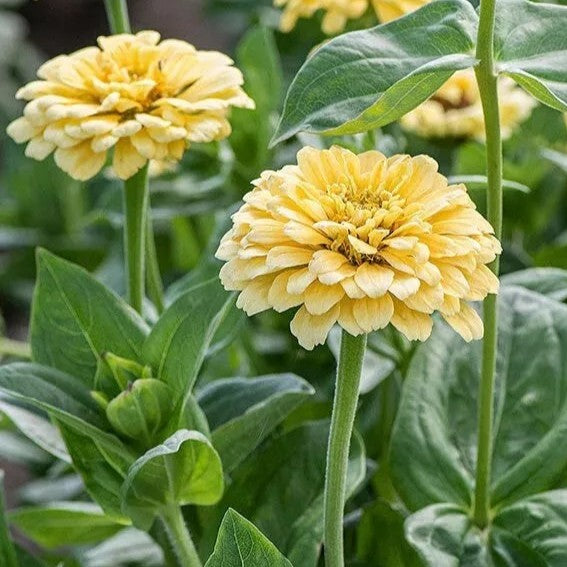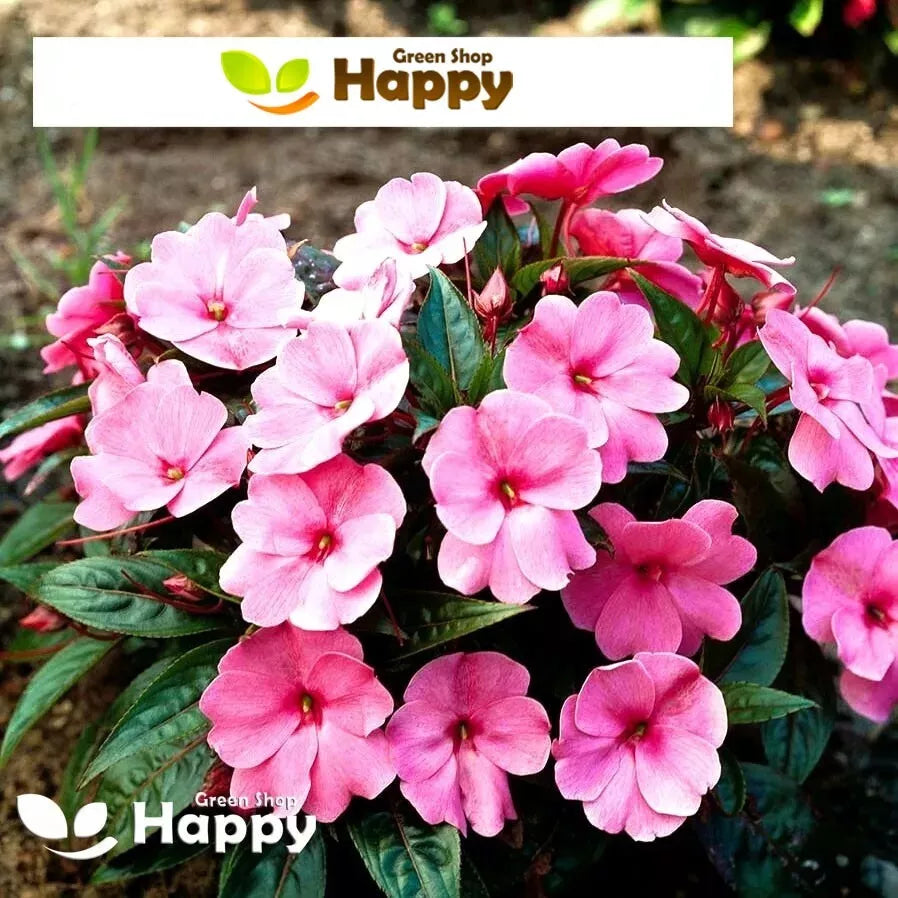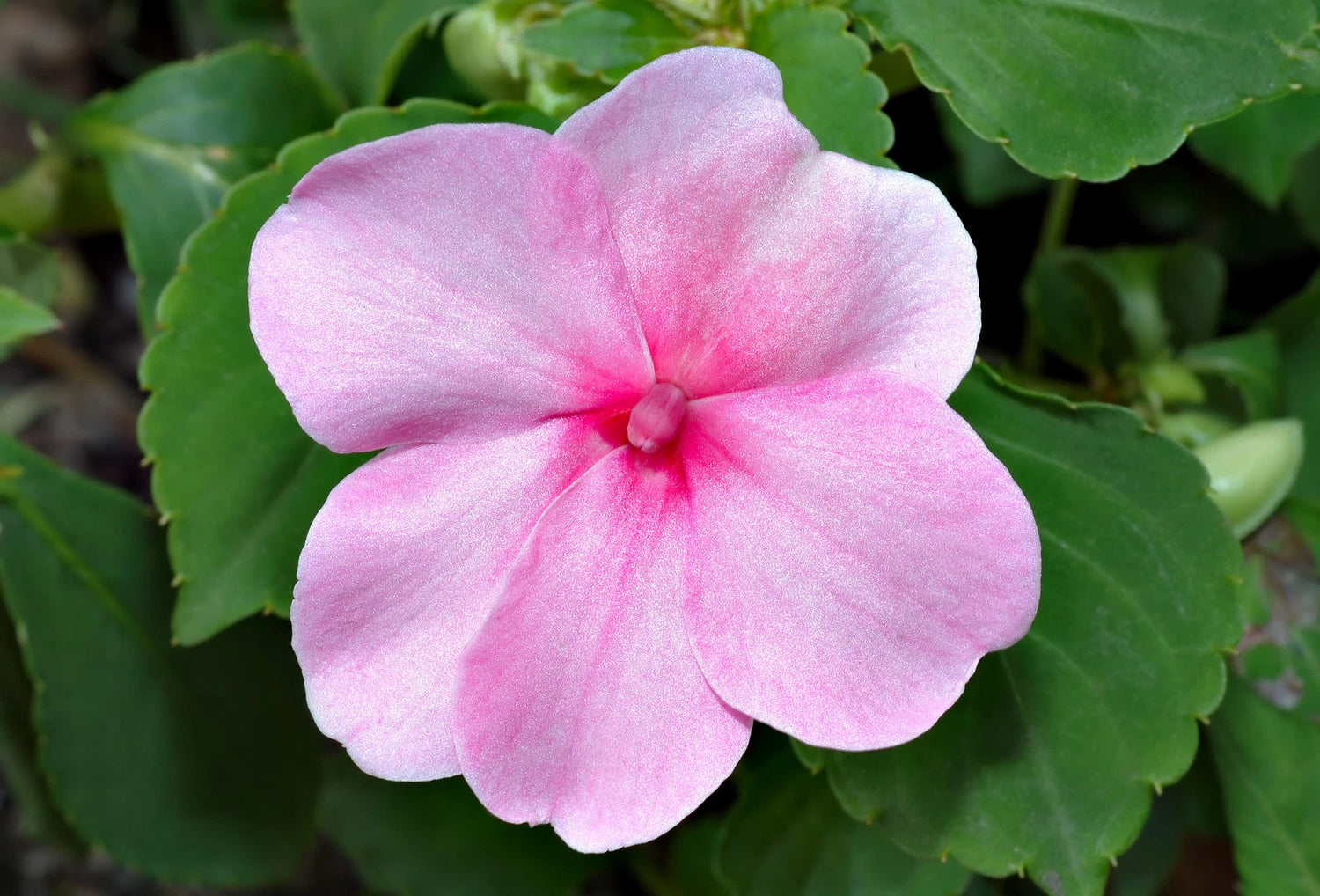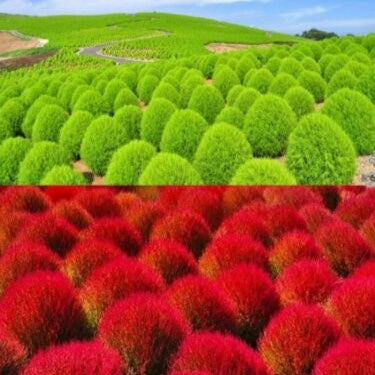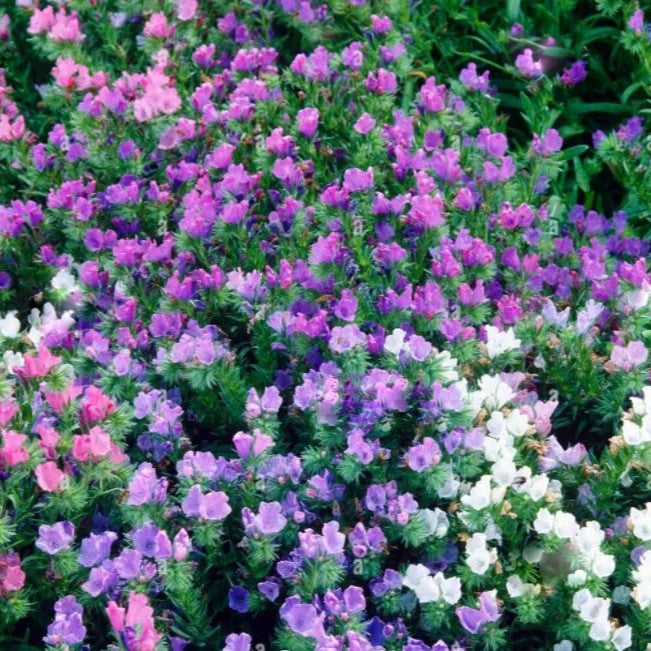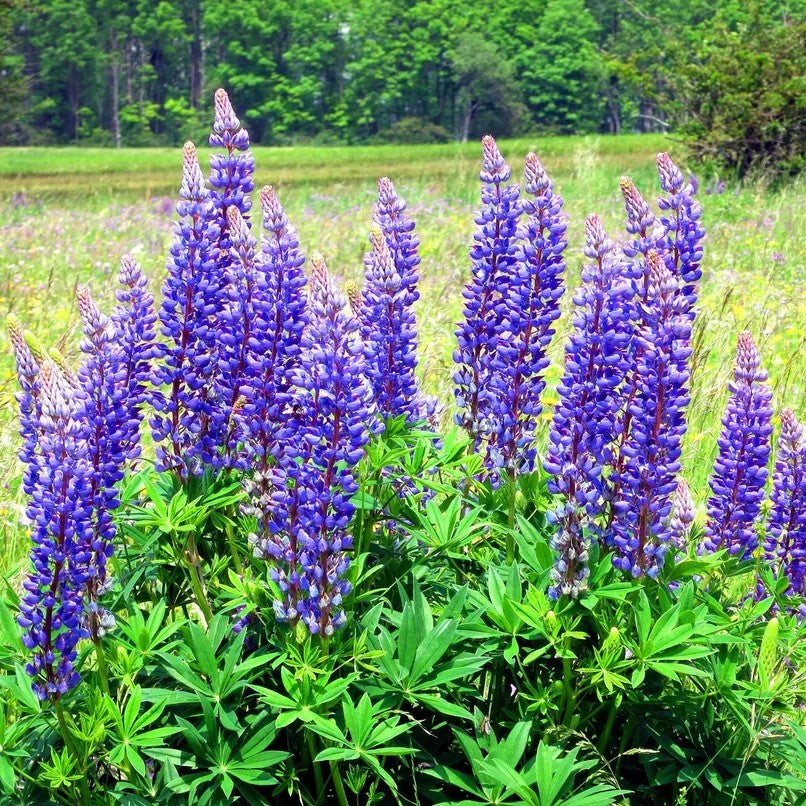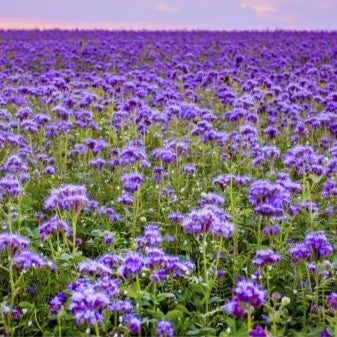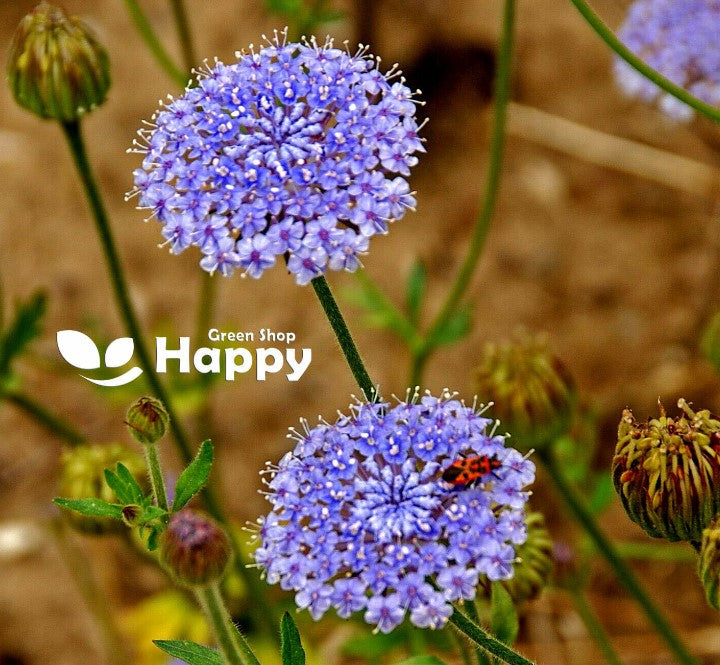Sort by:
326 products
326 products
Busy Lizzie 'Baby' Pink – Seeds (Impatiens walleriana)
The Busy Lizzie 'Baby' Pink is a compact and floriferous variety, producing a profusion of soft to vibrant pink blooms that last from late spring right through until the first frosts. With its dwarf, uniform habit, this variety is especially well-suited to bedding, borders, containers, and shaded gardens, adding a cheerful burst of color where other flowers may struggle.
Highlights
-
Masses of bright pink flowers all summer long
-
Neat, compact dwarf habit – ideal for bedding and pots
-
Thrives in sun or partial shade
-
Long flowering season until frost
-
Easy to grow and maintain
Key Features
-
Botanical Name: Impatiens walleriana
-
Variety: 'Baby' Pink
-
Seed Count: Approx. seeds per pack
-
Height/Spread: 20–25 cm tall, 20 cm spread
-
Position: Sun to partial shade, moist but well-drained soil
-
Flowering Period: Late spring to autumn
Perfect For
-
Summer bedding displays
-
Containers, window boxes, and hanging baskets
-
Shady corners and north-facing gardens
-
Continuous soft pink color in any planting scheme
Sowing Instructions
-
Sow indoors Jan–Apr at 21–24°C
-
Surface sow on moist compost; do not cover (needs light)
-
Germination: 14–21 days
-
Prick out seedlings when large enough, spacing 20 cm apart
-
Harden off before planting outside after the last frost
Burning Bush – Seeds (Dictamnus fraxinella)
Burning Bush (Dictamnus fraxinella) is a striking perennial known for its tall spikes of fragrant, pink to white flowers that bloom from late spring to early summer. Its aromatic foliage releases a citrus-like scent when touched, adding sensory interest to borders and cottage gardens. Hardy and long-lived, this unique plant attracts pollinators and makes an eye-catching addition to perennial beds.
Why Grow "Burning Bush"
-
Tall spikes of fragrant pink to white flowers
-
Aromatic foliage with a citrus-like scent
-
Hardy, long-lived perennial
-
Attracts bees, butterflies, and other pollinators
Key Features
-
Type: Perennial (Dictamnus fraxinella)
-
Height: 60–100 cm
-
Flowering: Late spring to early summer
-
Position: Full sun to partial shade
-
Uses: Borders, cottage gardens, perennial beds, pollinator gardens
Ideal For
-
Adding vertical interest and fragrance to borders
-
Cottage and mixed perennial garden designs
-
Pollinator-friendly planting
-
Gardeners seeking unique, low-maintenance perennials
Sowing & Growing
-
Sow indoors: 6–8 weeks before last frost
-
Sow outdoors: After frost danger has passed
-
Germination: 14–28 days (may require cold stratification)
-
Space seedlings: 30–40 cm apart
-
Prefers well-drained soil and sunny to partially shaded locations
Burning Bush – Seeds (Kochia scoparia)
Burning Bush (Kochia scoparia) is a fast-growing annual known for its striking foliage that transitions from bright green in summer to fiery red in autumn. Its bushy, compact growth habit makes it perfect for borders, mixed beds, and accent planting. Easy to grow and drought-tolerant, it provides long-lasting color and texture while attracting pollinators.
Why Grow "Burning Bush"
-
Bright green foliage turning fiery red in autumn
-
Bushy, compact habit ideal for borders and accent planting
-
Fast-growing and drought-tolerant
-
Adds long-lasting color and texture to gardens
Key Features
-
Type: Annual (Kochia scoparia)
-
Height: 50–100 cm
-
Flowering/Foliage color: Summer green, autumn red
-
Position: Full sun
-
Uses: Borders, mixed beds, accent planting, pollinator-friendly gardens
Ideal For
-
Borders and mixed garden beds
-
Autumn color displays
-
Drought-tolerant and low-maintenance gardens
-
Pollinator-friendly landscapes
Sowing & Growing
-
Sow outdoors: March–May in prepared soil
-
Germination: 10–15 days at 18–22°C
-
Thin seedlings to 25–30 cm apart
-
Prefers full sun and well-drained soil
-
Water moderately until established
Burning Bush – Seeds (Kochia trichophylla)
Create a dazzling garden display with the Burning Bush, a striking ornamental foliage plant. Starting as soft green mounds in summer, the plants transform into fiery shades of crimson and scarlet in autumn, giving the effect of glowing flames. Its uniform, bushy habit makes it perfect for edging, bedding, or mass plantings.
What Makes It Special
-
Unique seasonal color transformation: green to brilliant red
-
Neat, globe-shaped plants with fine feathery foliage
-
Low maintenance and fast growing
Key Features
-
Height: 50–90 cm
-
Annual, easy to grow
-
Provides brilliant late-season color
-
Excellent for borders, hedging, and ornamental accents
Ideal For
-
Bedding displays and edging
-
Focal points in mixed borders
-
Striking mass plantings or container gardening
Sowing
-
Sow outdoors directly in April–May after frost risk has passed
-
Scatter thinly and cover lightly with soil
-
Germination: 7–14 days at 18–22°C
-
Thin seedlings to 30–40 cm apart for strong bushy growth
Blueweed Flower Mix Seeds (Echium plantagineum)
The Blueweed Flower Mix is a vibrant and easy-to-grow annual that produces a spectacular display of blue, pink, violet, and purple trumpet-shaped blooms. Also known as Paterson’s Curse, this wildflower is prized for its striking colors and its ability to attract bees, butterflies, and other pollinators throughout summer. Perfect for naturalistic planting, wildflower meadows, or borders, this hardy mix thrives in poor soils and sunny sites, offering months of color with minimal care.
What Makes It Special
-
Long-lasting multi-colored floral display
-
Excellent for wildlife-friendly gardens
-
Thrives in dry, poor soils where other flowers may struggle
-
Perfect choice for naturalistic meadows and pollinator habitats
Key Features
-
Botanical name: Echium plantagineum
-
Common name: Blueweed / Paterson’s Curse
-
Seed count: Approx. seeds per pack
-
Height/Spread: 30–80 cm tall, 20–40 cm spread
-
Position: Full sun; well-drained sandy or gravelly soil
-
Flowering period: June–September
Ideal For
-
Wildflower meadows
-
Pollinator-friendly planting
-
Cottage gardens
-
Low-maintenance beds and borders
-
Naturalizing in sunny, dry spots
Sowing Instructions
-
When to sow: March–May outdoors or September for earlier blooms next year
-
How to sow:
-
Sow seeds directly where they are to flower, in well-prepared soil
-
Lightly rake in and firm down
-
Keep soil moist until germination (7–14 days)
-
-
Spacing: Thin seedlings to 20–30 cm apart
-
Care: Once established, requires very little maintenance. Tolerant of drought. Deadhead to prolong flowering.
Blue Lupine – Seeds (Lupinus angustifolius)
Blue Lupine (Lupinus angustifolius) is a stunning annual or short-lived perennial producing tall spikes of vivid blue pea-like flowers. Blooming from late spring to early summer, it adds vertical interest and vibrant color to borders, cottage gardens, and mixed flower beds. Hardy and easy to grow, this variety attracts bees and butterflies, making it perfect for pollinator-friendly gardens and long-lasting summer displays.
Why Grow "Blue Lupine"
-
Tall spikes of striking blue flowers
-
Long flowering season from late spring to early summer
-
Hardy, low-maintenance annual or short-lived perennial
-
Pollinator-friendly and adds vertical interest
Key Features
-
Type: Annual/Short-lived perennial (Lupinus angustifolius)
-
Height: 60–90 cm
-
Flowering: Late spring to early summer
-
Position: Full sun
-
Uses: Borders, cottage gardens, mixed flower beds, pollinator gardens
Ideal For
-
Vertical color in borders and mixed beds
-
Cottage-style gardens
-
Pollinator-friendly planting schemes
-
Long-lasting summer floral displays
Sowing & Growing
-
Sow indoors: February–April in trays or pots
-
Sow outdoors: April–May after frost
-
Germination: 14–21 days at 18–22°C
-
Thin seedlings 25–30 cm apart
-
Prefers well-drained soil in full sun
-
Mulch in winter for protection in colder regions
Blue Tansy Lacy Seeds (Phacelia tanacetifolia)
Blue Tansy Lacy is an annual flowering plant celebrated for its delicate, lacy foliage and vibrant blue flowers. This fast-growing plant is a favorite for pollinator gardens, attracting bees, butterflies, and other beneficial insects. Its feathery foliage and bright blooms also make it excellent for borders, wildflower meadows, and cut-and-dried arrangements.
What Makes It Special
-
Stunning sky-blue flowers on tall, graceful stems
-
Lacy, aromatic foliage adds texture and interest to the garden
-
Highly attractive to bees and other pollinators
-
Quick to establish and easy to grow from seed
Key Features
-
Botanical name: Phacelia tanacetifolia
-
Common name: Blue Tansy, Lacy Phacelia
-
Seed count: Approx. seeds per pack
-
Height/Spread: 60–90 cm tall, 30–40 cm spread
-
Position: Full sun, well-drained soil
-
Flowering period: Summer
-
Lifespan: Annual
Ideal For
-
Pollinator and wildlife gardens
-
Borders, meadows, and naturalistic plantings
-
Cut flower and dried arrangements
-
Companion planting to improve soil and attract beneficial insects
Sowing Instructions
-
When to sow: March–May outdoors, or start indoors 4–6 weeks earlier
-
How to sow:
-
Sow thinly in prepared, well-drained soil
-
Lightly cover with soil (0.5 cm)
-
Keep soil moist until seedlings emerge (7–14 days)
-
-
Spacing: Thin to 30–40 cm apart once established
-
Care: Low-maintenance; tolerant of poor soils and drought once established. Deadhead to prolong flowering.
Blue Petunia Star F1 Prio – 50 Seeds (Petunia multiflora)
Description:
Create a stunning display of vibrant blue in your garden with Blue Petunia Star F1 Prio (Petunia multiflora). This vigorous F1 hybrid produces star-shaped, bright blue flowers on compact, well-branched plants. Perfect for hanging baskets, containers, and garden borders, it blooms continuously from spring through autumn, offering long-lasting color with minimal care. Ideal for gardeners seeking high-performance, eye-catching blooms.
Key Features
-
Star-shaped, vibrant blue flowers
-
Compact and well-branched growth habit
-
Continuous flowering from spring to autumn
-
Perfect for baskets, containers, and borders
-
Easy to grow and low maintenance
Ideal For
-
Hanging baskets and window boxes
-
Patio containers and balcony planters
-
Garden borders and bedding displays
-
Long-lasting seasonal color
Sowing & Growing
-
Sow Indoors: February–April
-
Transplant Outdoors: May, after frost
-
Germination: 10–14 days at 20–24°C
-
Plant Spacing: 25–30 cm apart
-
Height: 20–25 cm
-
Light: Full sun
-
Soil: Fertile, well-drained
Care Tips
-
Deadhead regularly to encourage continuous blooming
-
Water evenly; avoid overwatering
-
Fertilize every 2–3 weeks with a balanced liquid fertilizer
-
Pinch young plants to encourage bushy growth
Blue Lace Flower Seeds (Didiscus caeruleus / Trachymene caerulea)
The Blue Lace Flower is an elegant and delicate annual, much loved for its airy umbels of soft sky-blue blossoms. Each flower head resembles lacework, carried on long slender stems, making it ideal for cutting. With its light, lacy texture, this plant brings charm and movement to borders, cottage gardens, and wildflower-style plantings. It is also a superb choice for floral arrangements, both fresh and dried.
What Makes It Special
-
Produces lace-like umbels of pastel blue blooms
-
Excellent cut flower with a long vase life
-
Attractive to bees, butterflies, and pollinators
-
Adds a soft, romantic touch to borders and bouquets
Key Features
-
Botanical name: Didiscus caeruleus / Trachymene caerulea
-
Common name: Blue Lace Flower
-
Seed count: Approx. seeds per pack
-
Height/Spread: 45–60 cm tall, 20–30 cm spread
-
Position: Full sun, well-drained soil
-
Flowering period: Summer to early autumn
-
Lifespan: Half-hardy annual
Ideal For
-
Cottage gardens
-
Wildflower meadows
-
Borders and mixed beds
-
Cut flower and dried arrangements
-
Pollinator-friendly gardens
Sowing Instructions
-
When to sow: March–May indoors, or April–June outdoors after frost has passed
-
How to sow:
-
Sow seeds thinly in trays with seed compost or directly outdoors in fine soil
-
Lightly cover seeds with a thin layer of soil or vermiculite
-
Keep moist until seedlings appear (14–21 days)
-
-
Transplant/Thin: Space plants 20–30 cm apart
-
Care: Deadhead to prolong flowering; provide support in windy sites
Showing 288/326


